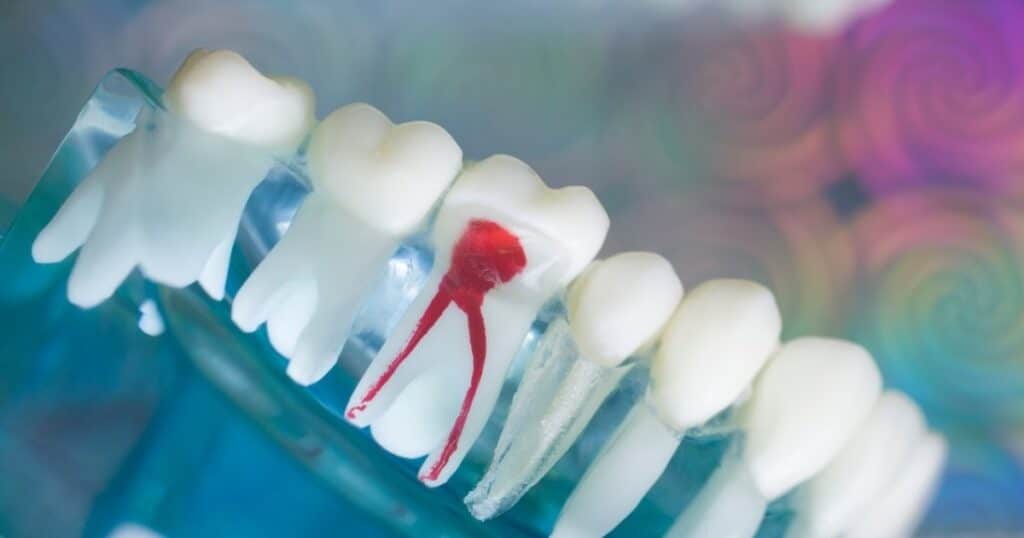Get Root Canals In Chester, VA, With Advanced Techniques
Modern root canal procedures have become significantly less painful and simpler compared to the past when the only option was extracting the infected tooth. Utilizing an advanced method, we ensure that Root Canals in Chester, VA, are conducted with maximum comfort and precision.
If you’ve ever experienced the agony of a tooth infection, you understand the pain it can cause. A root canal treatment involves the removal of an infection from the tooth nerve. Thankfully, we no longer have to resort to tooth extraction as the sole solution!
What Is A Root Canal?
Root Canal is also known as endodontics; a root canal treatment involves removing infected, injured, or dead pulp from a tooth. A root canal comprises the pulp chamber, main canal, and intricate anatomical branches within a tooth. This treatment not only helps preserve your teeth for many more years but also prevents the need for extraction.
Advantages of Root Canal Treatment
The primary objective of root canal treatment is the preservation and salvation of the natural tooth. One of the key advantages of undergoing a root canal is the elimination of pain and infection within the oral cavity. Additional benefits encompass:
Enhanced appearance: Following a root canal, patients receive a crown or filling, restoring the aesthetic appeal of the treated tooth.
Diminished risk of further decay: The removal of infected dental pulp prevents the spread of bacteria, reducing the risk of damage to surrounding teeth.
Restored functionality: Root canals reinstate a tooth’s health, enabling it to function on par with any other natural tooth.Preservation of the natural tooth: The irreplaceable look and functionality of a natural tooth are retained through root canal treatment.
How Does It Work?
1. Diagnosis:
The dentist diagnoses the need for a root canal through examination and X-rays to identify infected or damaged pulp in the tooth.
2. Anesthesia and Access:
Local anesthesia is administered for pain control, and a small access opening is created to reach the pulp chamber and root canals.
3. Pulp Removal and Cleaning:
The infected or damaged pulp is carefully removed, and the root canals are cleaned and shaped to eliminate debris and bacteria.
4. Canal Filling and Sealing:
The cleaned root canals are filled with a biocompatible material to seal them, preventing recontamination. The access opening is then sealed.
5. Restoration (if needed) and Recovery:
In some cases, a crown may be recommended for additional protection. Patients can resume normal activities after the procedure, experiencing relief from pain, with follow-up appointments ensuring continued tooth health.
Contact Us For Root Canals
Endodontic (root canal) surgery becomes essential in locating fractures or hidden canals not visible on X-rays yet causing tooth pain. This procedure can also address damaged root surfaces or surrounding bone. The most common surgery for saving damaged teeth is an apicoectomy or root-end resection. For additional information on Root Canals in Chester, VA, please visit our office or call us.
FAQ
ROOT CANAL
Video Transcript
Root canal therapy is a very common procedure. It has a reputation of being undesirable and painful. But when done properly it is actually painless. Every tooth in your mouth is composed of a crown and a root. When a cavity or bacteria penetrates the tooth, the root and its nerves become irritated. As a result, the bacteria within the pulp cavity needs to be removed and cleaned in order to restore the tooth to its healthy state. Following the procedure, the tooth is fragile and consequently is restored with the natural crown for a lifetime of durability. Root canals have a success rate of 95% or greater. Most root canal are diagnosed by patients’ sensitivities to a specific tooth. Be sure to consult your dentist any symptoms or discomfort occur.









